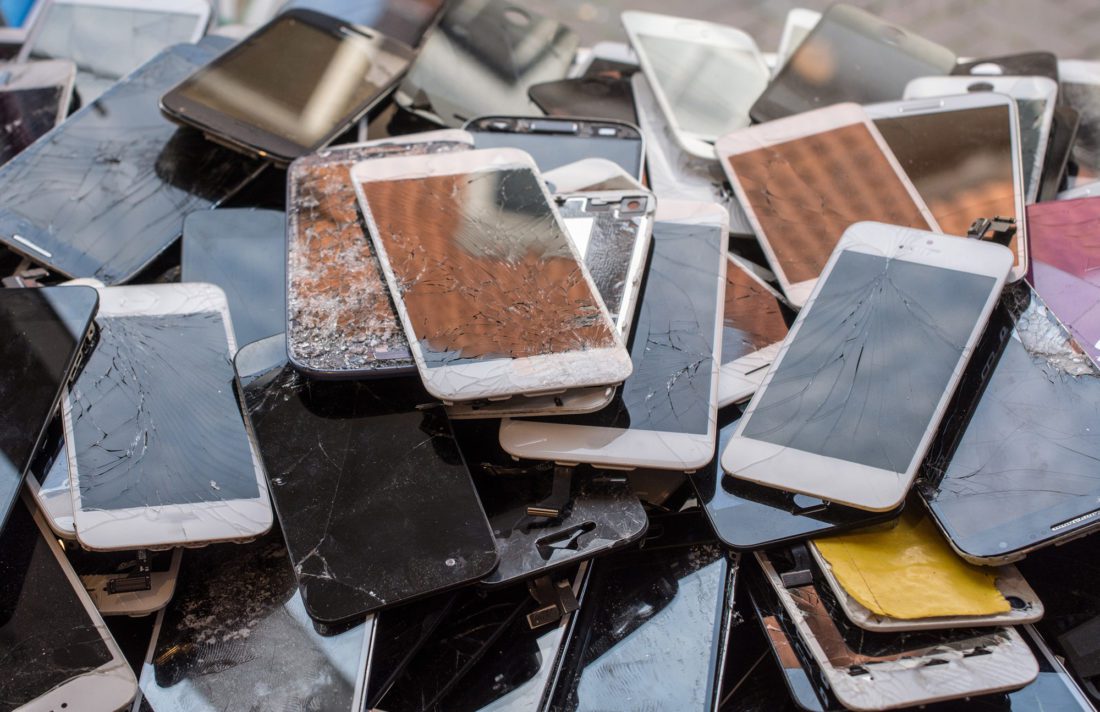
The “right-to-repair” movement scored a major victory last month when New York State passed the first law requiring companies that make digital electronic products to give the public access to repair instructions, tools, and parts.
The goal was to make it easier and cheaper for consumers to fix their gadgets, and to break manufacturers’ monopolies on the repair market, allowing independent repair shops to compete.
Yet despite a groundswell of support from consumer and environmental groups, right-to-repair laws may have unintended consequences, according to new Berkeley Haas research. The result could be higher prices, more e-waste, or longer-term use of older energy-guzzling products.
“Strikingly, (right-to-repair) legislation can potentially lead to a ‘lose-lose-lose’ outcome that compromises manufacturer profit, reduces consumer surplus, and increases the environmental impact, despite repair being made easier and more affordable,” according study co-author Luyi Yang, assistant professor of operations and IT management at Berkeley Haas.
The paper, forthcoming in Management Science, is the first to examine the pricing, environmental, and consumer implications of the growing international movement known as the right-to-repair. It offers insights for policymakers working to craft such legislation.
A growing movement
Manufacturers have generally opposed right-to-repair laws, often citing privacy, safety, and copyright issues. Yet what’s also at stake is their bottom line: An active market for used products reduces demand for new gadgets, and one strategy to discourage this has been to charge exorbitantly high repair prices.
“…There is no denying that profit remains a top concern of manufacturers that oppose right-to-repair,” Yang says.
Yet from Apple’s proprietary pentalobe screws, which require specialized screwdrivers, to tractors loaded with sensors and software that can only be fixed by authorized dealers, consumers and policymakers have grown increasingly frustrated with manufacturers’ controls on the repair market. Massachusetts first adopted a motor vehicle right-to-repair law in 2012, and it expanded nationally in 2018. Last year, the Biden Administration ordered the Federal Trade Commission (FTC) to enact new regulations to facilitate independent repair; earlier this year, the Senate introduced a bill to allow farmers to repair their own equipment. The movement is also active in Europe.
Manufacturers’ strategic response
Yang was curious to delve into the implications for manufacturers. He built a model to analyze how they might respond to the new regulations, and what the repercussions might be.
The answer depends on the type of product in question, and especially the price. In the market for cheap, low-cost products, the strategic response for manufacturers would be to lower new product prices and flood the market, thus reducing the appeal of repair and decreasing cannibalization from used products. “Motivating more consumers to purchase new products translates into higher new production volume and more e-waste,” Yang says. “As a result, the environmental impact increases.”
On the other hand, for manufacturers of higher-end products that are expensive to produce, a continual price cut would eventually leave the profit margin too thin. If independent repair was widely available, products would have a longer lifespan, which makes them more valuable. Manufacturers would have the incentive to take advantage of that increased value and raise new product prices, which hurts consumers. And even though people might buy fewer new products, easier repair could lead more consumers to use old, energy-inefficient products, resulting in a higher environmental impact.
In fact, the worst-case scenario could occur for products that have a high environmental impact when they’re in use—such as cars, trucks, refrigerators, or other major appliances. Manufacturers may raise prices, and with a flourishing repair market, more people might end up buying and using old power guzzlers.
Policy implications
The upshot is that well-intentioned policy makers should not make assumptions about who will benefit from right-to-repair laws. “Ignoring the strategic response from the product market will paint an incomplete picture and even lead to flawed conclusions,” Yang says. Instead, legislators should examine specific product categories, including their production cost and environmental impact, and avoid sweeping, one-size-fits-all policies.
“Different policy goals of protecting consumers versus the environment may conflict with each other” he concludes. “Often, a trade-off has to be made.”
Read the paper:
“Right to Repair: Pricing, Welfare, and Environmental Implications”
Management Science, Forthcoming
By Chen Jin (National University Singapore), Luyi Yang (UC Berkeley – Haas School of Business) and Cungen Zhu (National University of Singapore)